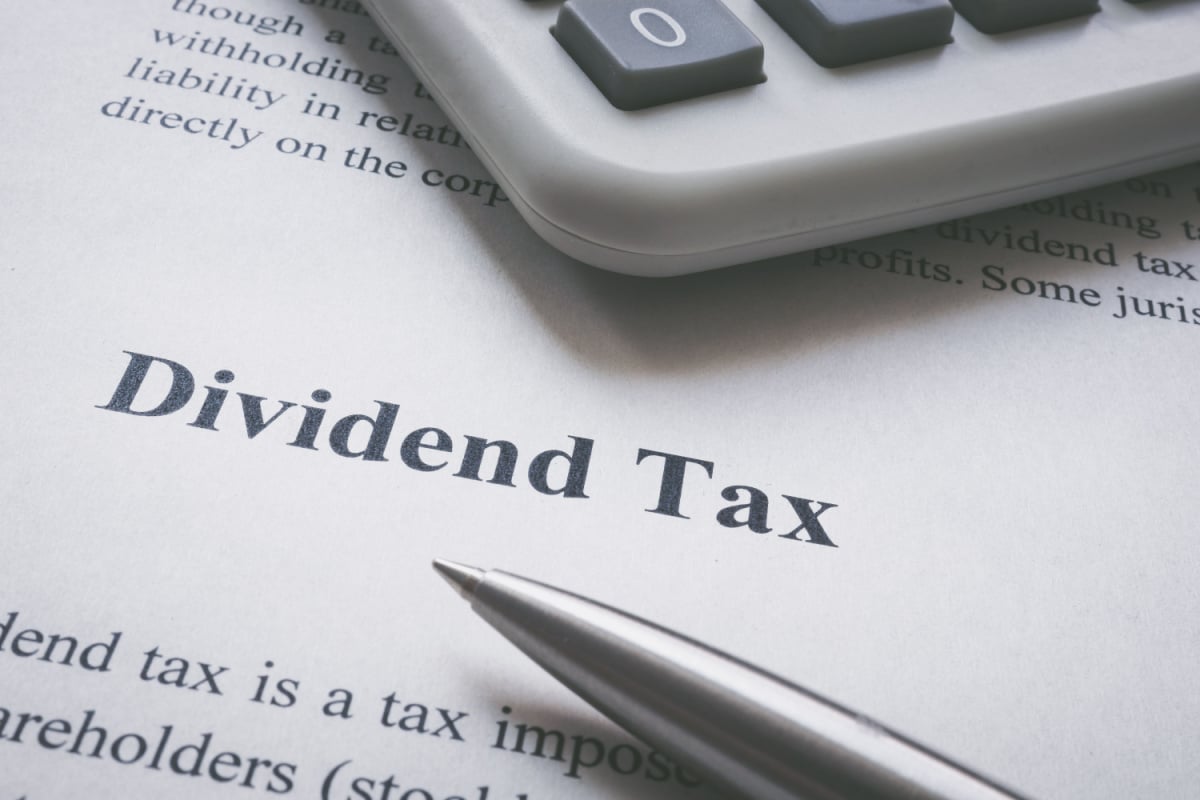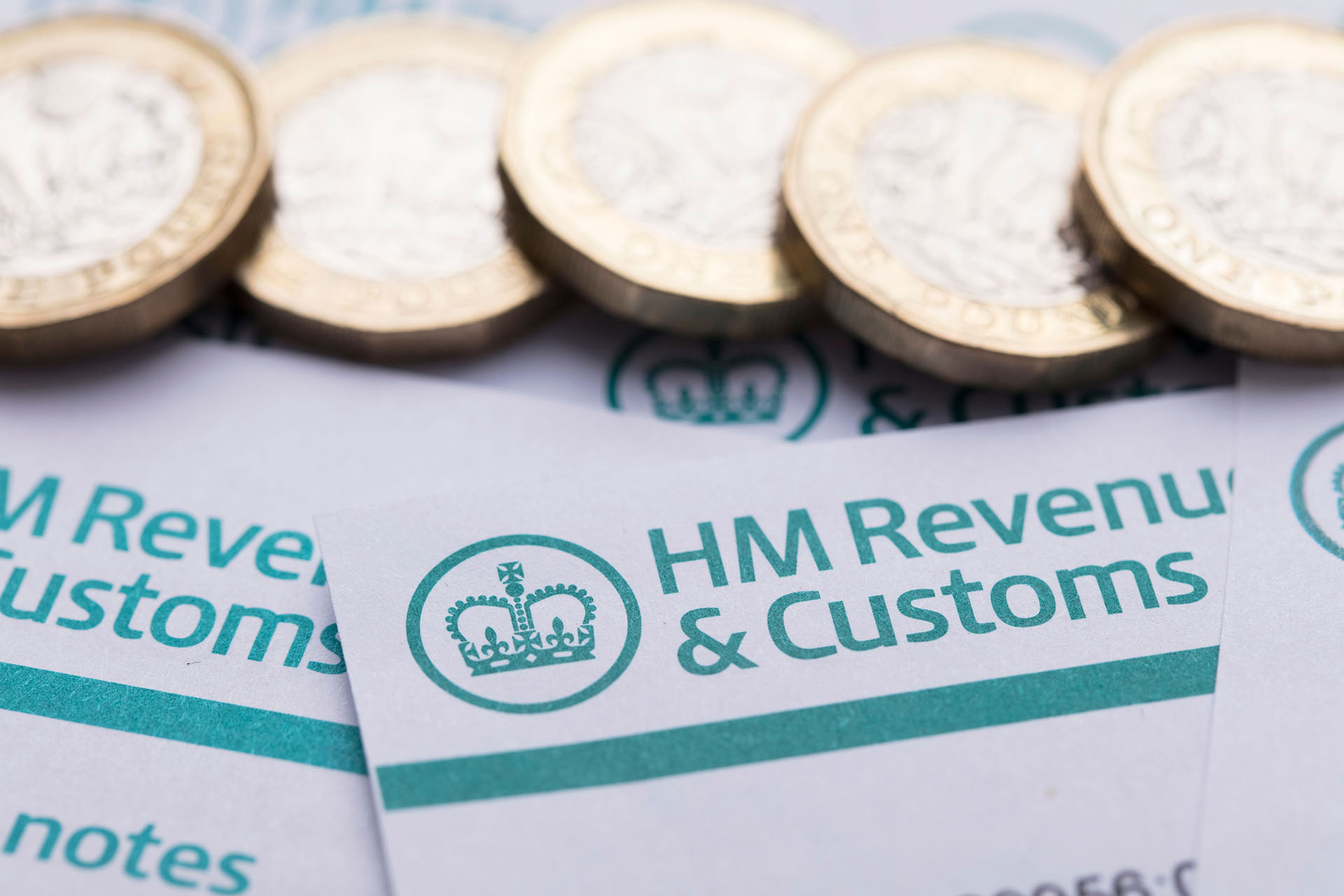
Open fast find
Close fast find
Dividend allowance 2025/26: investor implications
As of 6th April 2024, the annual tax-free dividend allowance in the UK was halved to £500, unchanged in the 2025/26 tax year. This reduction, part of broader taxation reforms overseen by HMRC, has been reduced now three times since 2017/18 (at which point it stood at £5,000). For individuals relying on dividend income, these changes have been significant.
Representing a 90% reduction of the allowance over a 6-year timespan, this is one of the most significant decreases of any UK tax during that period. Shareholders and business owners alike must now consider how these changes affect not only their dividend income but also their overall taxable income.
For investors, business owners and directors who receive regular dividend income, this change could prove highly erosive. Subsequently, researching its finer details – as well as alternative routes available to minimise the taxation and dividend taxes – could prove highly rewarding in the long term.
What is the dividend tax allowance for 2025/26?
The tax-free dividend allowance for the 2025/26 financial year is £500. This means that any individual who receives over £500 in dividend income in the 2025/26 financial year will be liable to pay dividend tax on the excess at their marginal rate. It is important to note that this allowance applies exclusively to dividend income, irrespective of other sources of earnings.
An investor’s marginal rate of dividend tax correlates with the taxable income they fall into. Ranging from 8.75% to 39.35%, the dividend tax rates for 2025/26 have remained unchanged from 2024/25, and are as follows:
|
Income Tax Bracket |
Income Range |
Dividend Tax Rate |
|---|---|---|
|
Basic rate taxpayer |
£12,571 to £50,270 |
8.75% |
|
Higher rate taxpayer |
£50,271 to £125,139 |
33.75% |
|
Additional rate taxpayer |
Over £125,140 |
39.35% |
For basic rate taxpayers, the impact on dividend income is particularly notable, and the allocation of dividend income in a portfolio should be carefully planned.
How does the 2025/26 dividend allowance compare to previous and upcoming tax years?
Introduced in 2016/17, the annual tax-free dividend allowance originally stood at £5,000. In 2018/19, this was reduced to £2,000, at which level it remained for five years.
In 2023/24 the dividend allowance halved to £1,000, and halved again at the start of the 2024/25 tax year. Still standing at £500, this equates to a total decrease of 90% in the allowance in the space of six years. With the current Chancellor not ruling out subsequent reductions of the allowance, this could see the level of dividend income subject to dividend taxes increase further, particularly affecting both basic rate and higher rate taxpayers.
What does this mean for investors?
For investors, these sharp reductions have significantly diminished the effectiveness of the dividend tax allowance and could severely impact long-term dividend income gains. If an additional rate taxpayer paying the highest 39.35% dividend tax rate moves into this bracket due to increased taxable income, they will see a greater erosion of net dividend income compared to six years ago.
For instance, an additional rate taxpayer now pays an extra £1,770 in tax on the first £5,000 of dividend income received from April 2025 compared to seven years earlier. These changes increased the tax burden on investors who rely on dividend income, making it harder e.g. for dividend-paying stocks to generate substantial, consistent returns.
Additionally, those depending on dividend income are also vulnerable to fiscal drag, much like UK income taxpayers. For an individual drawing £150,000 in dividends, the impact has been significant. Unlike income tax, we cannot use an average wage growth figure to estimate its effects. However, assuming a business maintains its financial position from the 2022/23 tax year to 2025/26, its profit increases would likely align with inflation. While assuming that a business's profit growth aligns with inflation can help illustrate the broader trend, it's of course important to note that business performance will have varied massively over the years spoken about, potentially leading to further income disturbances.
Combined with shrinking allowances, this presents a challenging outlook for dividend payouts.
Fiscal drag and Allowance decreases example for a £150,000 dividend
|
Year |
Dividend |
Extra Tax |
|
2022/23 |
£150,000 |
£0 |
|
2023/24 |
£165,750 |
£6,591 |
|
2024/25 |
£172,380 |
£2,805 |
|
2025/26 |
£176,690 |
£1,696 |
|
Increase |
£28,652 |
£11,093 |
Ultimately, these changes combined with fiscal drag have led shareholders to reconsider the role of dividends in their portfolios as well as methods to reduce their dividend tax. Equity options that prioritise long-term capital growth over regular dividend income – as well as tax-efficient investment schemes that can help minimise dividend taxes – may prove more attractive alternatives. Using a tax advisor might be a valuable way to save on dividend tax. For example, you might be able to combine taking a salary with dividends to maximise your allowances and reduce tax.
What other tax-free allowances can investors make use of in 2025/26?
The dividend tax allowance is just one of a number of tax-free allowances investors can make use of in the UK. In addition to strategies for reducing the impact on dividend income, investors have several other allowances available to protect their returns.
- Capital gains tax allowance: Each tax year, UK residents are able to realise gains on the sale of assets, such as stocks or property, up to a certain threshold without paying any capital gains tax (CGT). For the 2025/26 tax year, this threshold stands at £3,000, having decreased by more than 75% from the previous tax year when it was £12,300.
- ISA allowance: An individual savings account (ISA) allows UK taxpayers to save a certain level of capital each tax year without paying tax on any interest or the dividend income earned within the account. Investment ISAs include the Stocks and Shares ISA and Innovative Finance ISA (IFISA). The annual ISA allowance for 2025/26 is £20,000, which can be allocated solely into one ISA or distributed across different types of ISAs.
- Personal allowance: Every UK resident has a personal allowance, which is the level of annual income (including salary as well as other forms of income such as dividend income) they can earn before any income tax is due. For the 2025/26 tax year, the personal allowance is £12,570.
What tools can investors use to avoid dividend tax?
Though all UK taxpayers can make use of their annual tax-free dividend allowance, the rapidly decreasing allowance is proving increasingly restrictive. As dividend income forms an important part of many investors' income streams, exploring tax-efficient routes to manage or mitigate dividend taxes is essential.
Though these changes have decreased the effectiveness of the allowance considerably, several tax-efficient routes exist to assist with mitigating or avoiding dividend taxes entirely.
1. The Enterprise Investment Scheme (EIS) and Seed Enterprise Investment Scheme (SEIS)
The Enterprise Investment Scheme (EIS) and Seed Enterprise Investment Scheme (SEIS) are tax-efficient venture capital schemes, designed to encourage private investment into early-stage companies via a range of generous tax advantages.
Including up to 50% income tax relief, capital gains tax exemption, capital gains deferral relief and inheritance tax exemption, the schemes’ reliefs support investors in minimising the risk and maximising potential returns associated with venture capital. While the schemes do not strictly provide dividend tax exemption, they focus on long-term capital growth rather than on short-term dividend income.
With exits typically occurring between five and ten years from the initial investment, this longer-term focus negates the requirement for regular dividend income, which can be an increasingly taxed source of funds. Additionally, changes to the SEIS may make this option even more attractive for investors looking to manage their dividend taxes in the 2025/26 tax year.
2. Venture Capital Trusts (VCTs)
Venture Capital Trusts (VCTs) are tax-advantaged investment schemes in the UK that are designed to encourage investment in small and growing companies. Unlike the EIS and SEIS, VCTs are listed investment vehicles managed by a fund manager that facilitate investment into a collection of eligible early-stage companies.
Similar to the aforementioned schemes, many VCTs are growth-focused investments, though some VCTs will distribute tax-free dividends. When VCTs distribute dividend income, they can help reduce the overall burden of dividend taxes; however, their benefits can be balanced by less generous tax reliefs compared to direct EIS or SEIS investments.
3. Individual Savings Accounts
ISAs (Individual Savings Accounts) are tax-advantaged saving/investment accounts that allow individuals to save and invest varying amounts each year without paying tax on the interest, capital gains, or dividend income earned within the account. Investment ISAs, such as the Stocks and Shares ISA, enable investors to mitigate dividend tax liabilities by providing completely tax-free treatment of dividend income. However, ISA contributions are capped at £20,000 per year, which may be lower than the annual investment possibilities of other schemes.
4. Self invested Personal Pensions (SIPPs) and Small Self Administered Schemes (SSASs)
SIPPs (Self-Invested Personal Pensions) and SSASs (Small Self-Administered Schemes) are types of pension schemes in the UK that help individuals invest for their retirement with tax efficiency. The primary difference is that SIPPs are personal pensions for individuals, whereas SSASs are occupational pension schemes usually set up by a company’s directors for a group of up to 11 members.
Dividends and capital gains received within both SIPPs and SSASs are not subject to dividend taxes or capital gains tax. Additionally, pension contributions made into these schemes can lower your overall taxable income. However, the minimum required age to access both schemes’ pension pots is 55.
5. Investing in a Tax Advisor
As a business owner, your financial situation can be highly complex. Managing multiple businesses, navigating shared ownership structures, and balancing personally owned and business-owned properties all add layers of intricacy to your financial planning. No two situations are the same, which is why a tailored approach is essential.
Investing the time and resources to consult a tax advisor is a strategic decision that can provide significant benefits. With expert guidance, you can identify opportunities to reduce your taxable income, optimise your financial structure, and ensure compliance with evolving tax regulations. A well-planned tax strategy not only helps protect your wealth but also supports long-term financial growth and stability.
Planning your investments with dividend tax in mind
Whilst an individual’s capital allocations for 2025/26 and beyond will largely depend on personal circumstances and investment goals, planning for the current and upcoming reductions to the dividend tax allowance should play a role in every experienced investor’s tax plan. With dividend income representing an increasingly important element of many portfolios, investors should consider adjusting their strategies in light of both HMRC’s tightening taxation measures and the inevitable growth in taxable income from dividend income.
Whether this means reducing the proportion of dividend-paying stocks in favour of growth-focused alternatives such as the EIS and SEIS, or making full use of existing tax-free allowances, ensuring appropriate action is taken to account for a 90% reduction of the dividend allowance over six years could save investors considerable sums of capital. Additionally, reviewing pension contributions and optimising your personal allowance usage can further mitigate the impact of higher dividend taxes.
Regardless of your personal tax plan or investment strategy, you can explore the most significant tax changes impacting investors updated for this tax year with the GCV 2025/26 tax brochure.
%20(3)%20(2).jpg)







